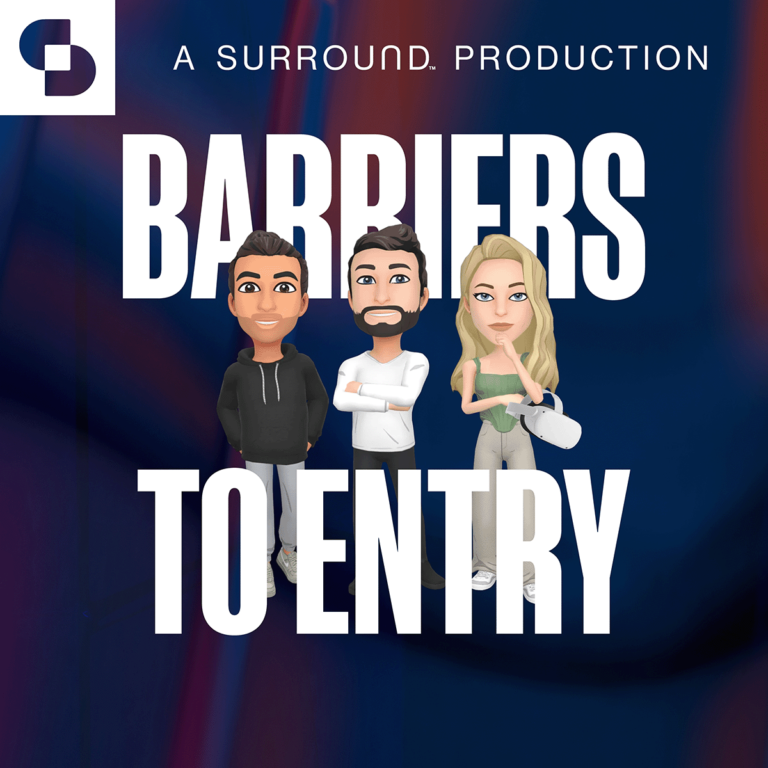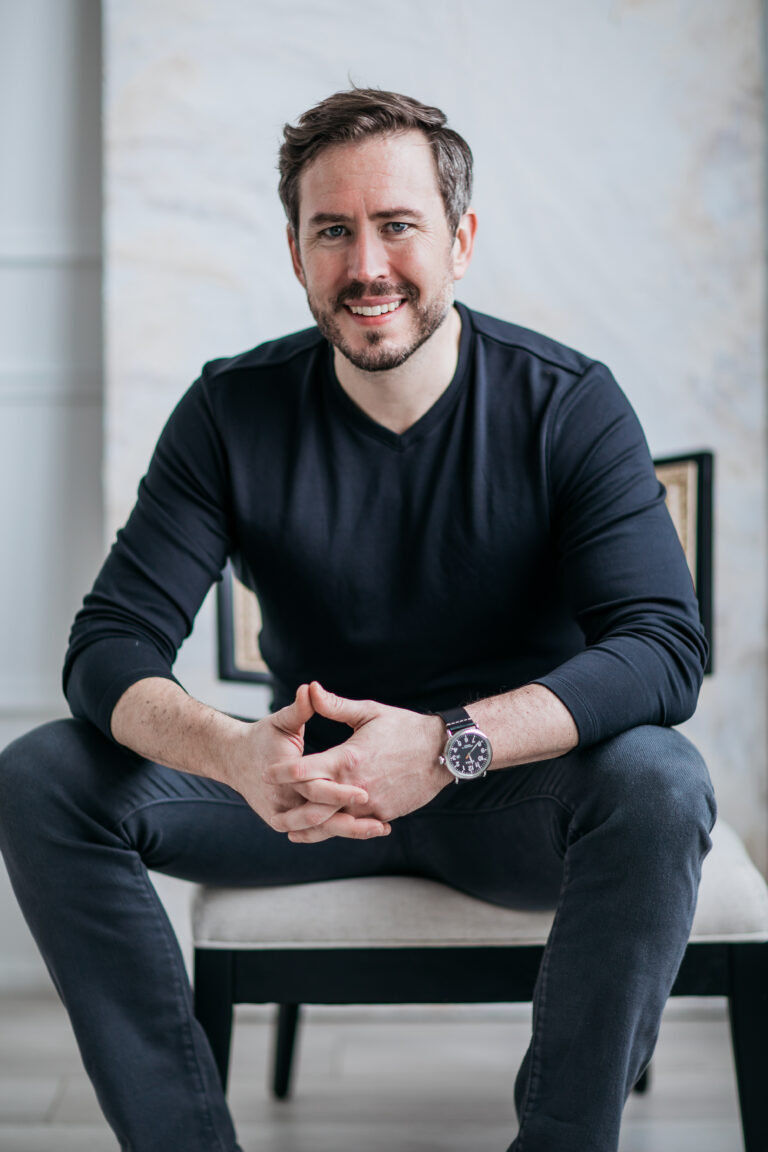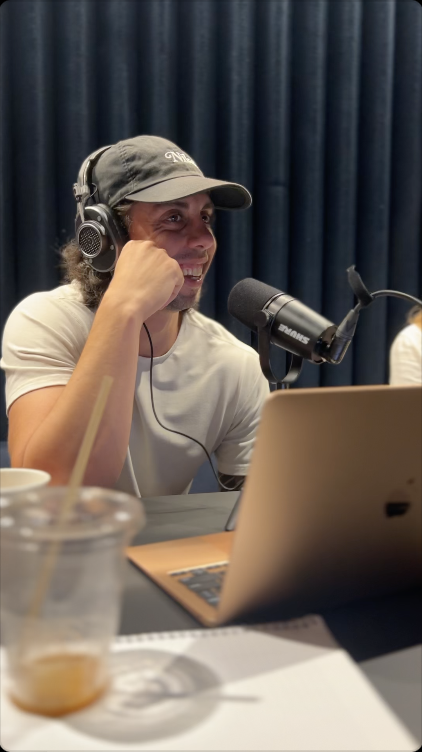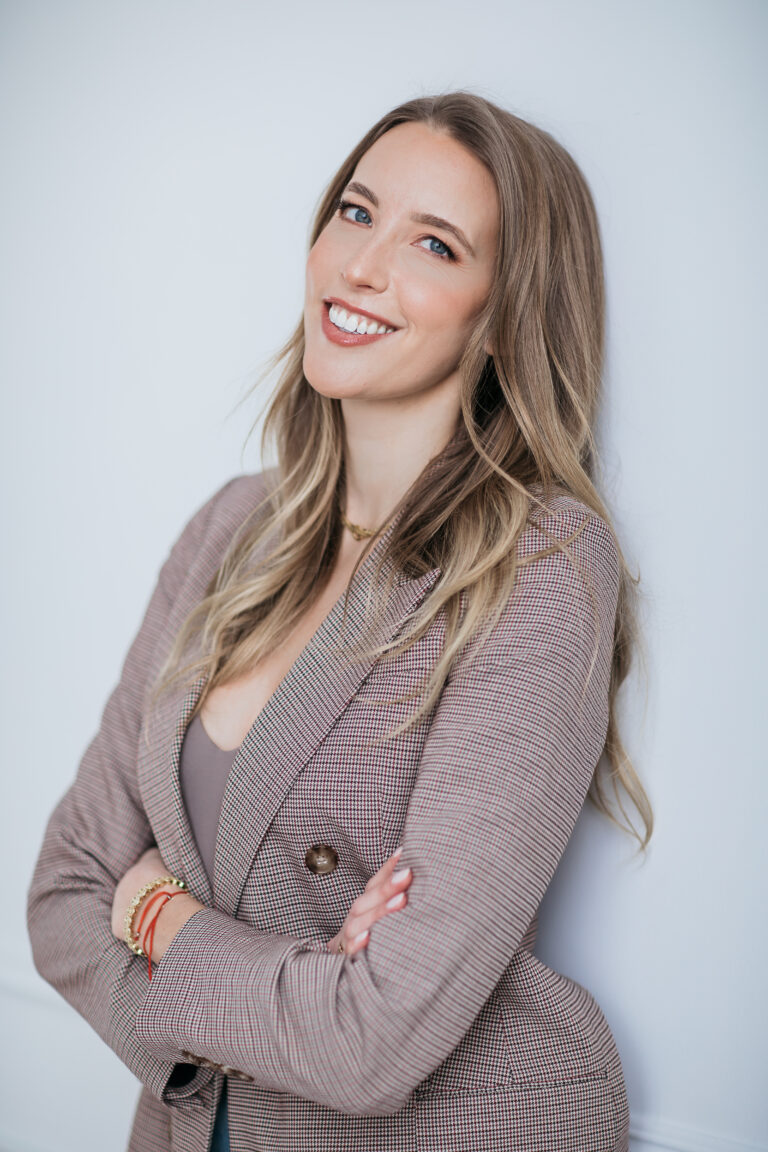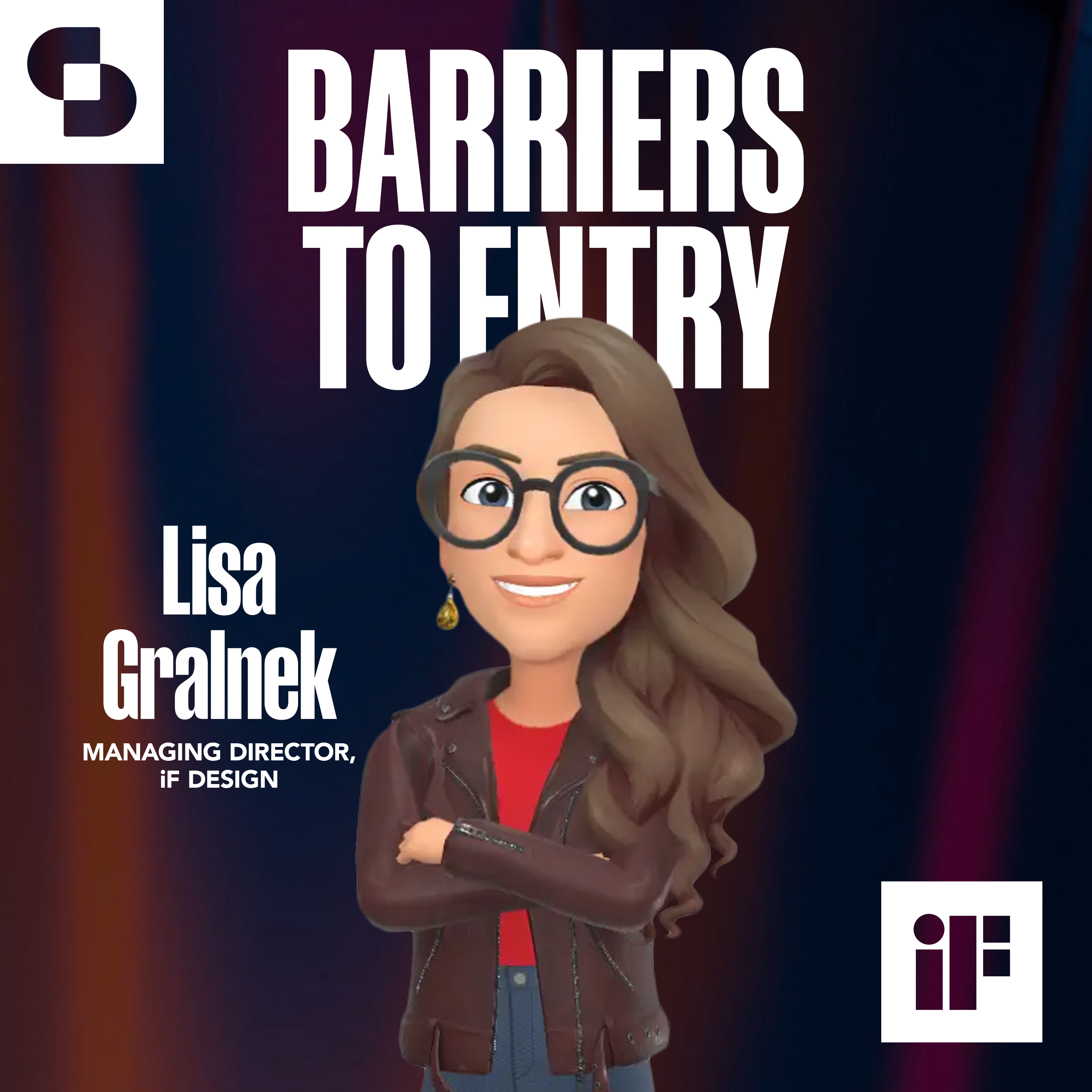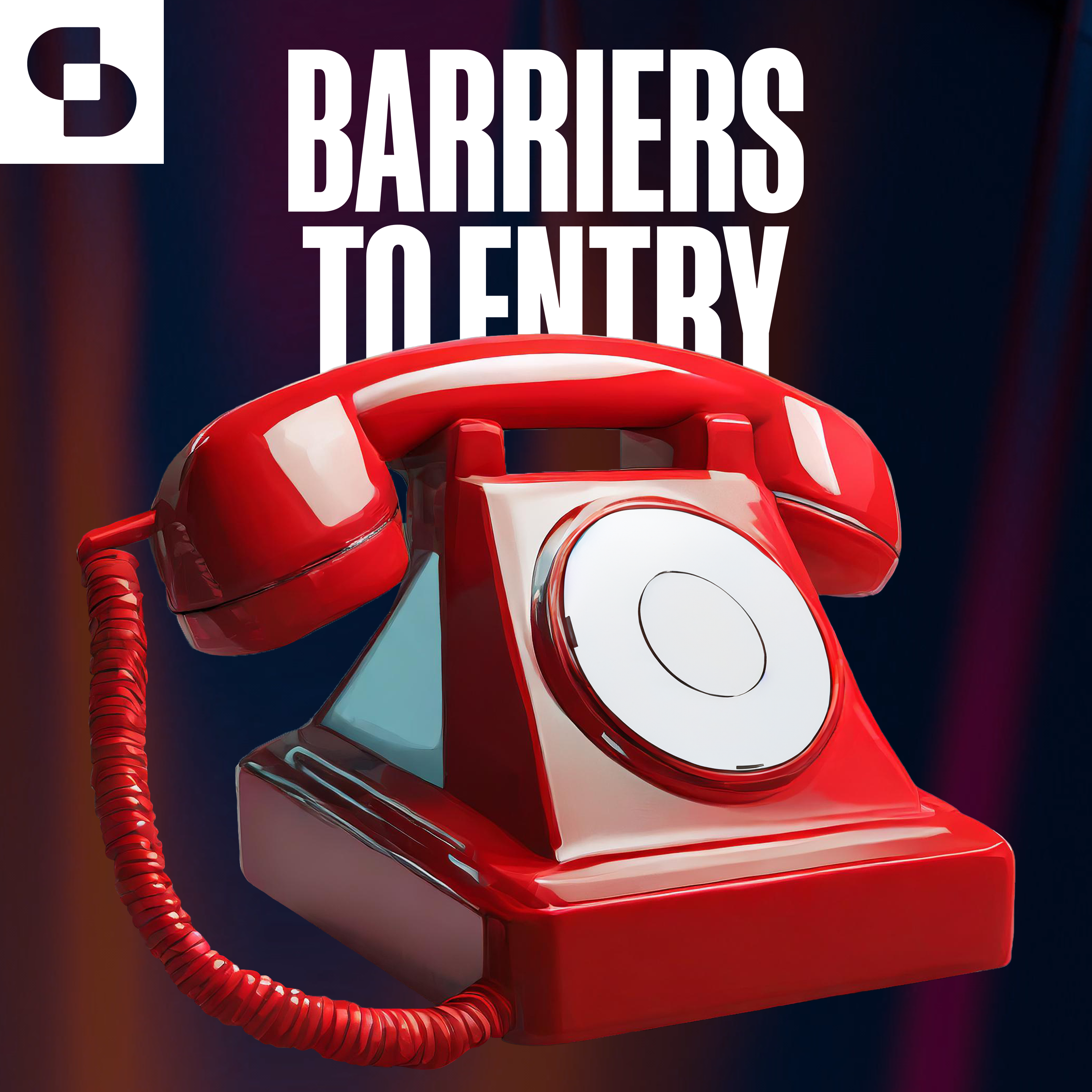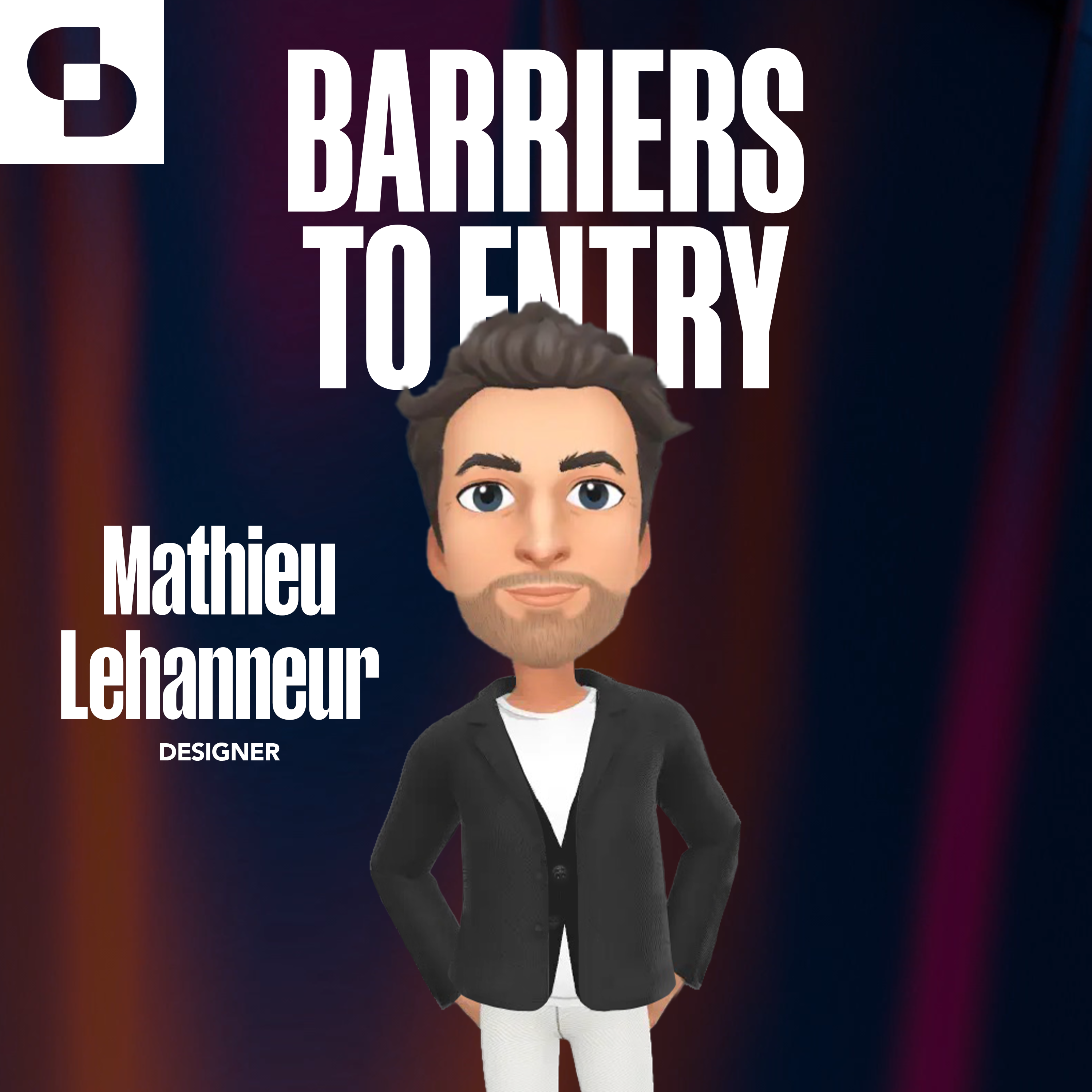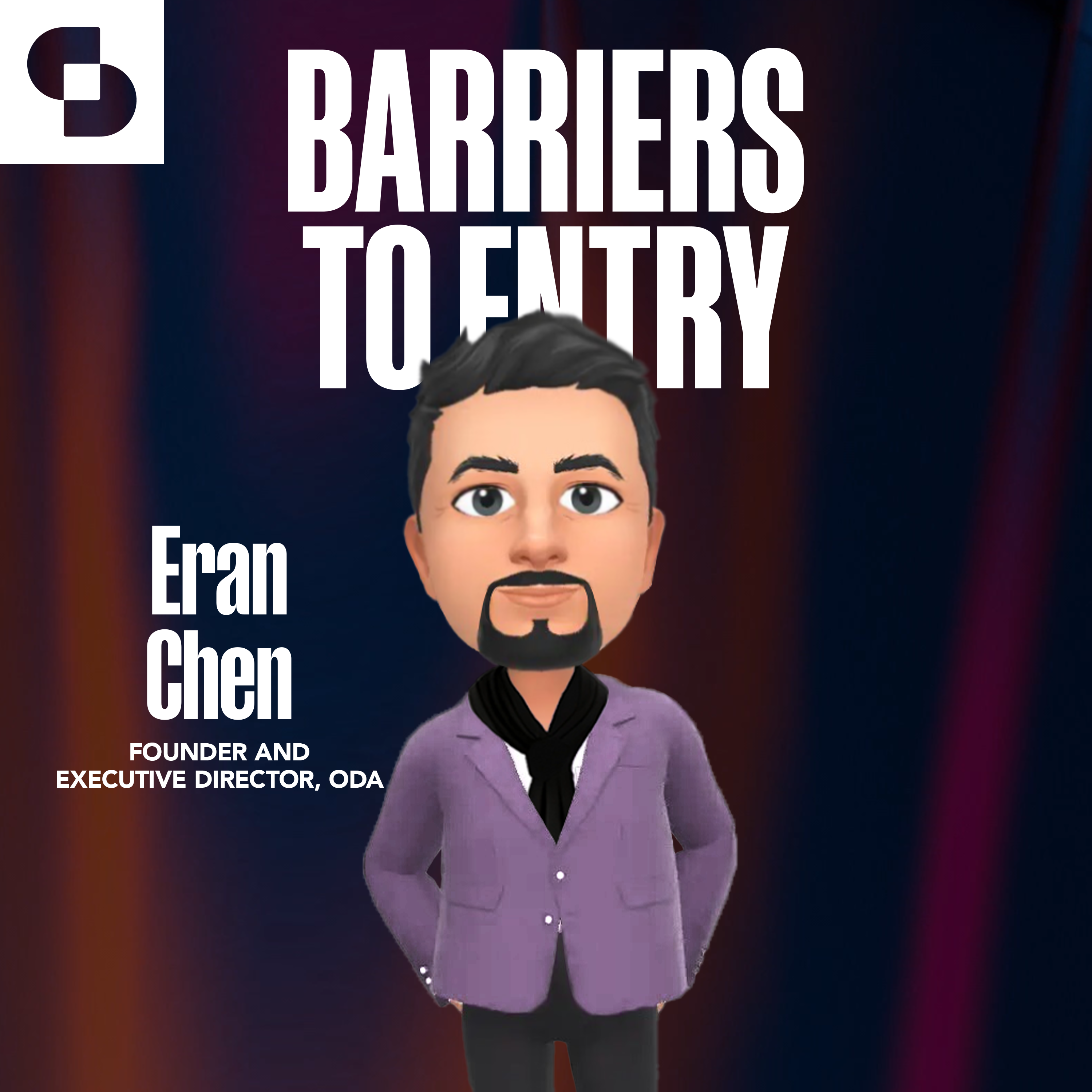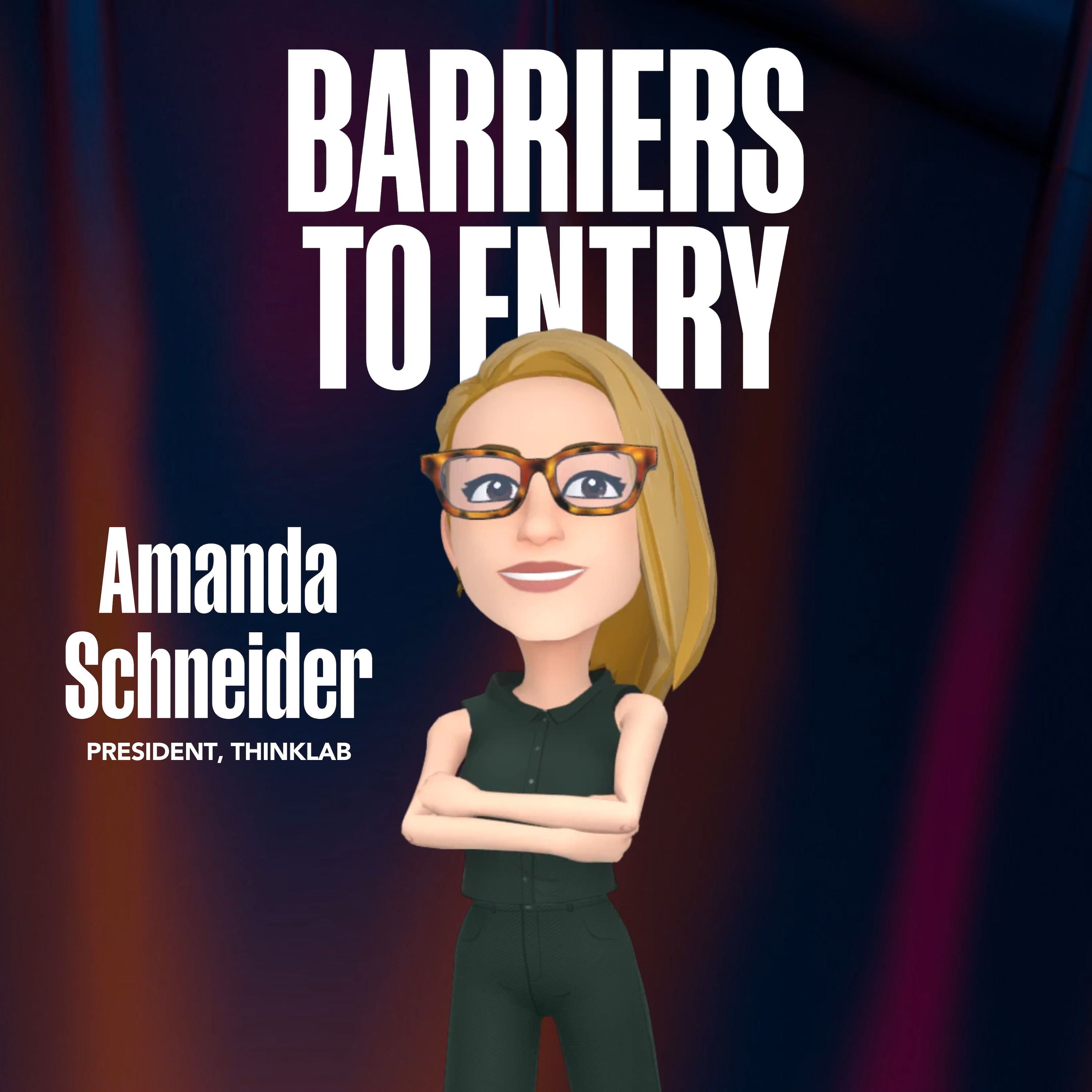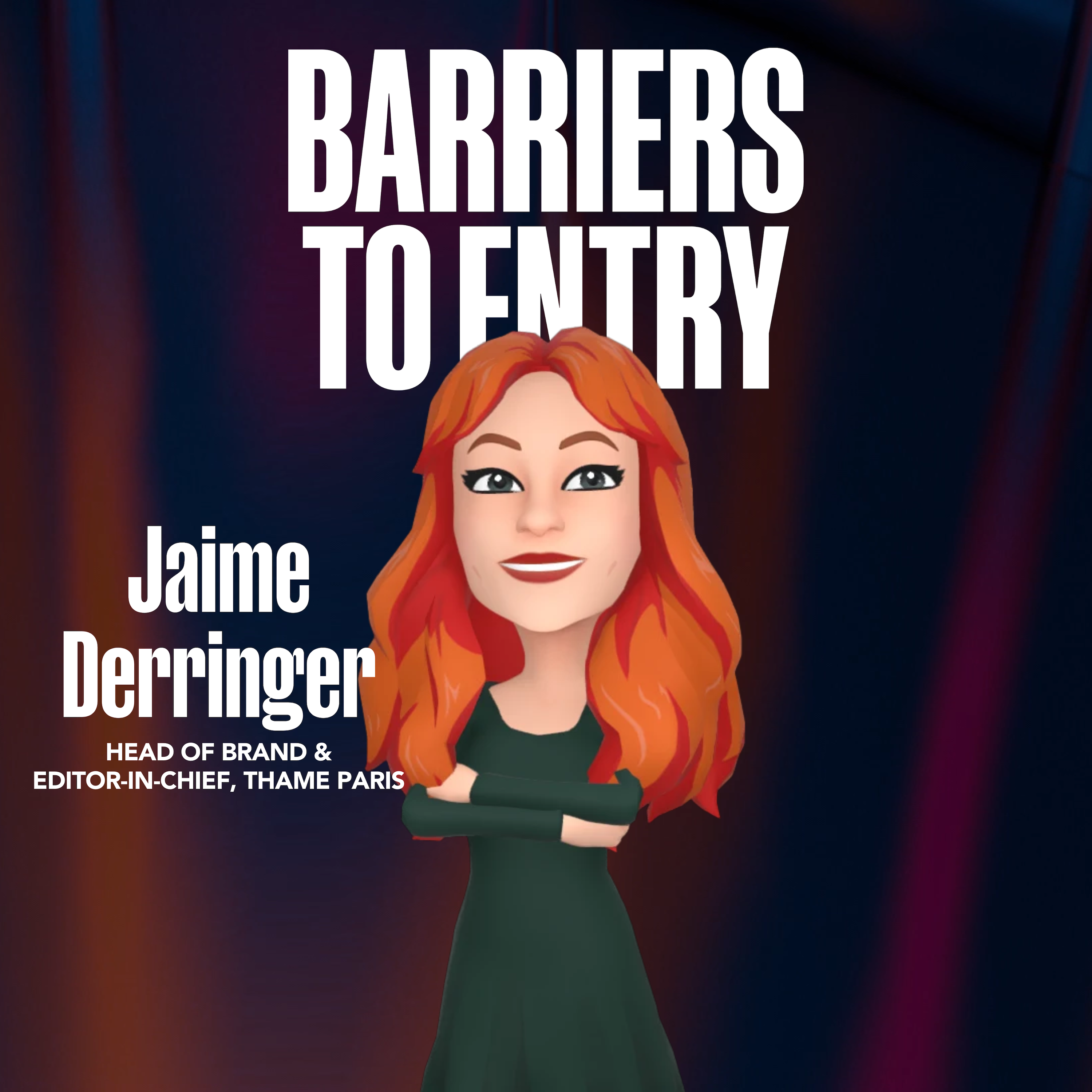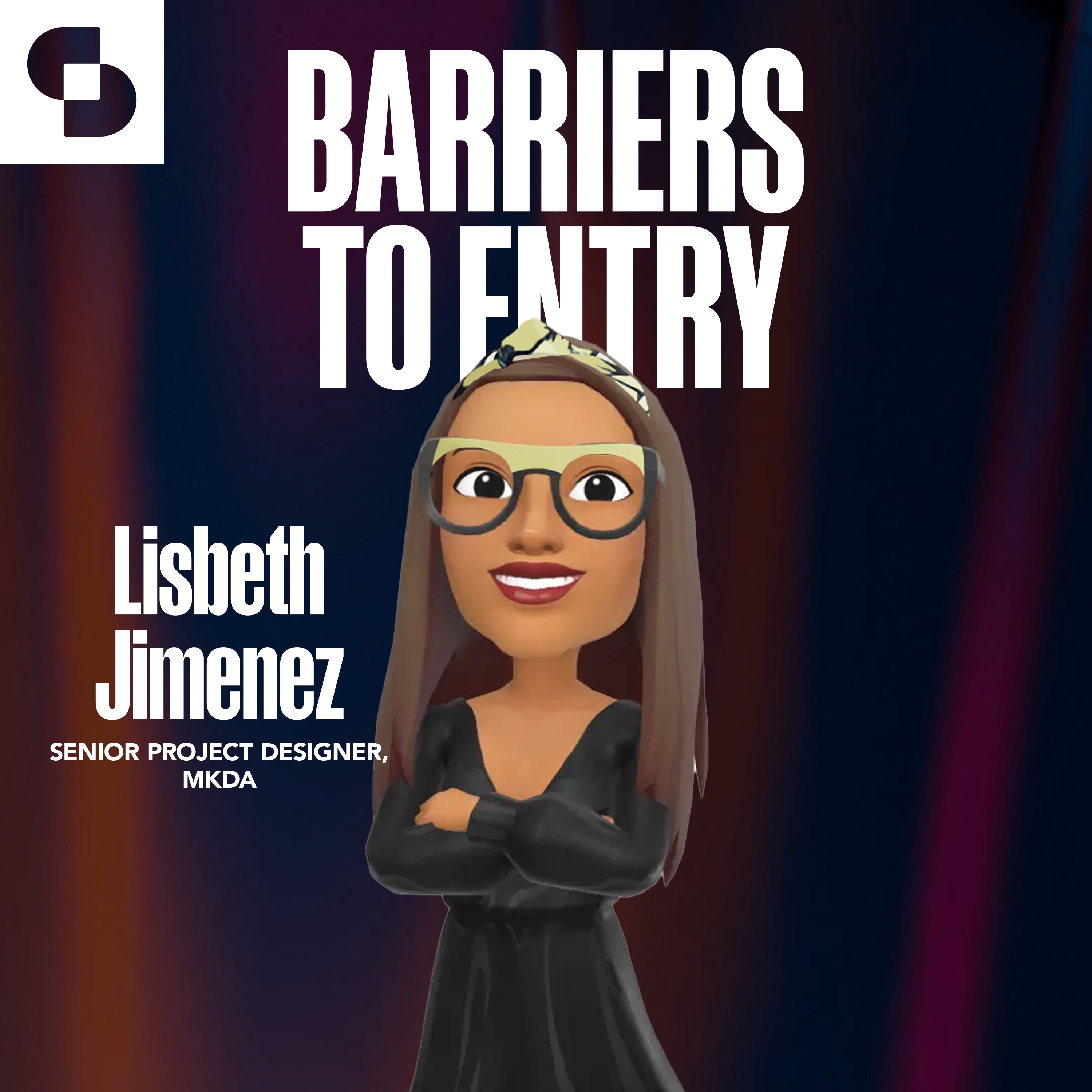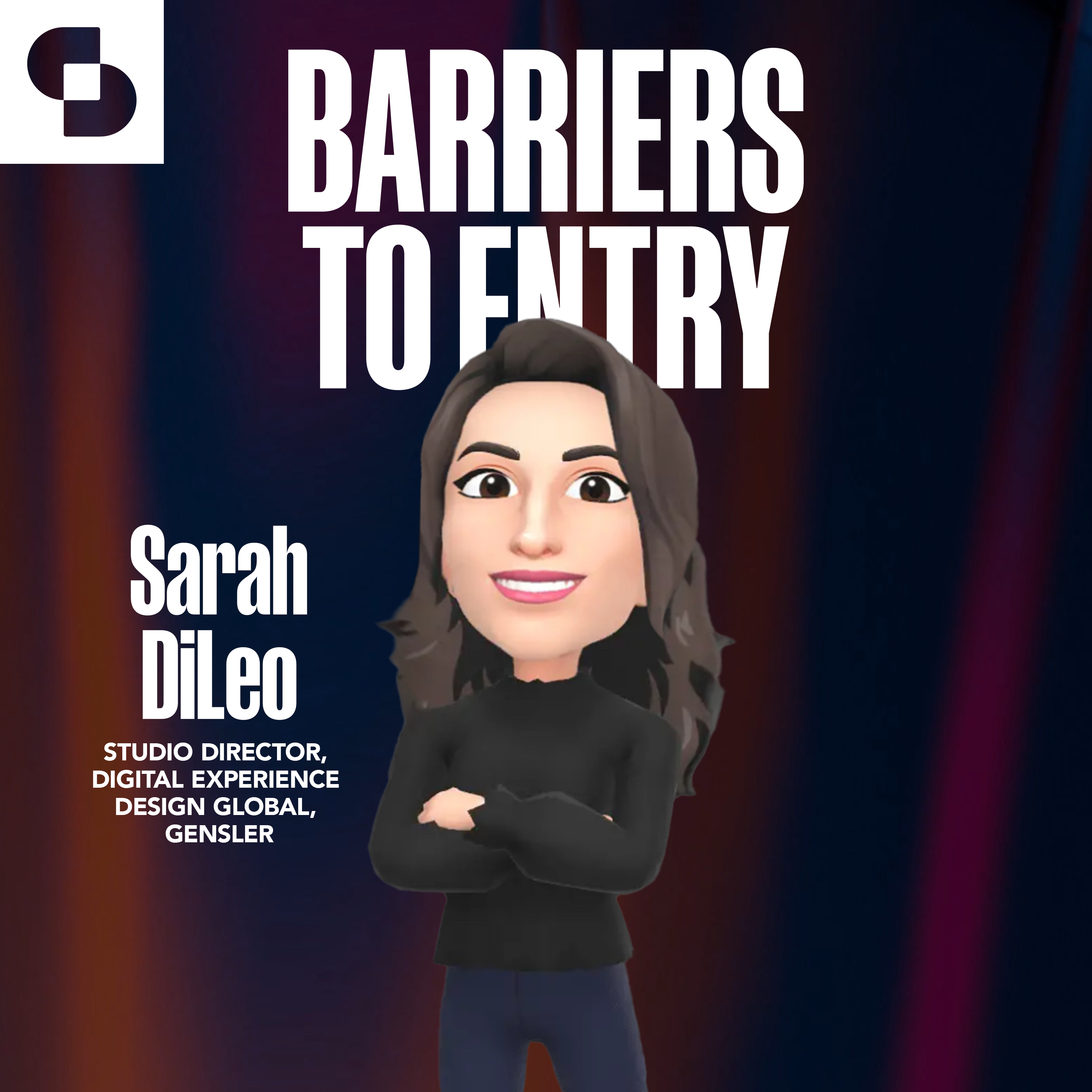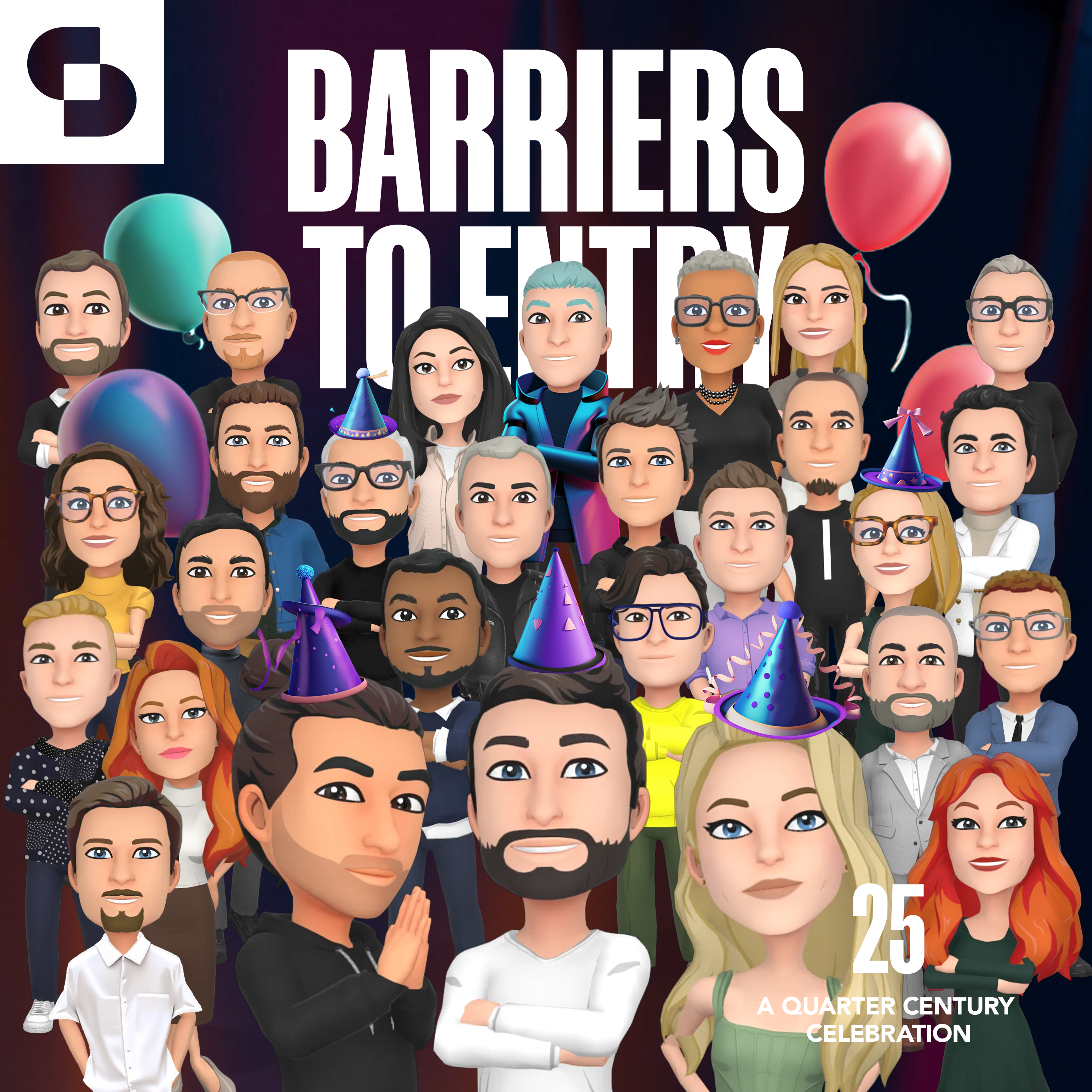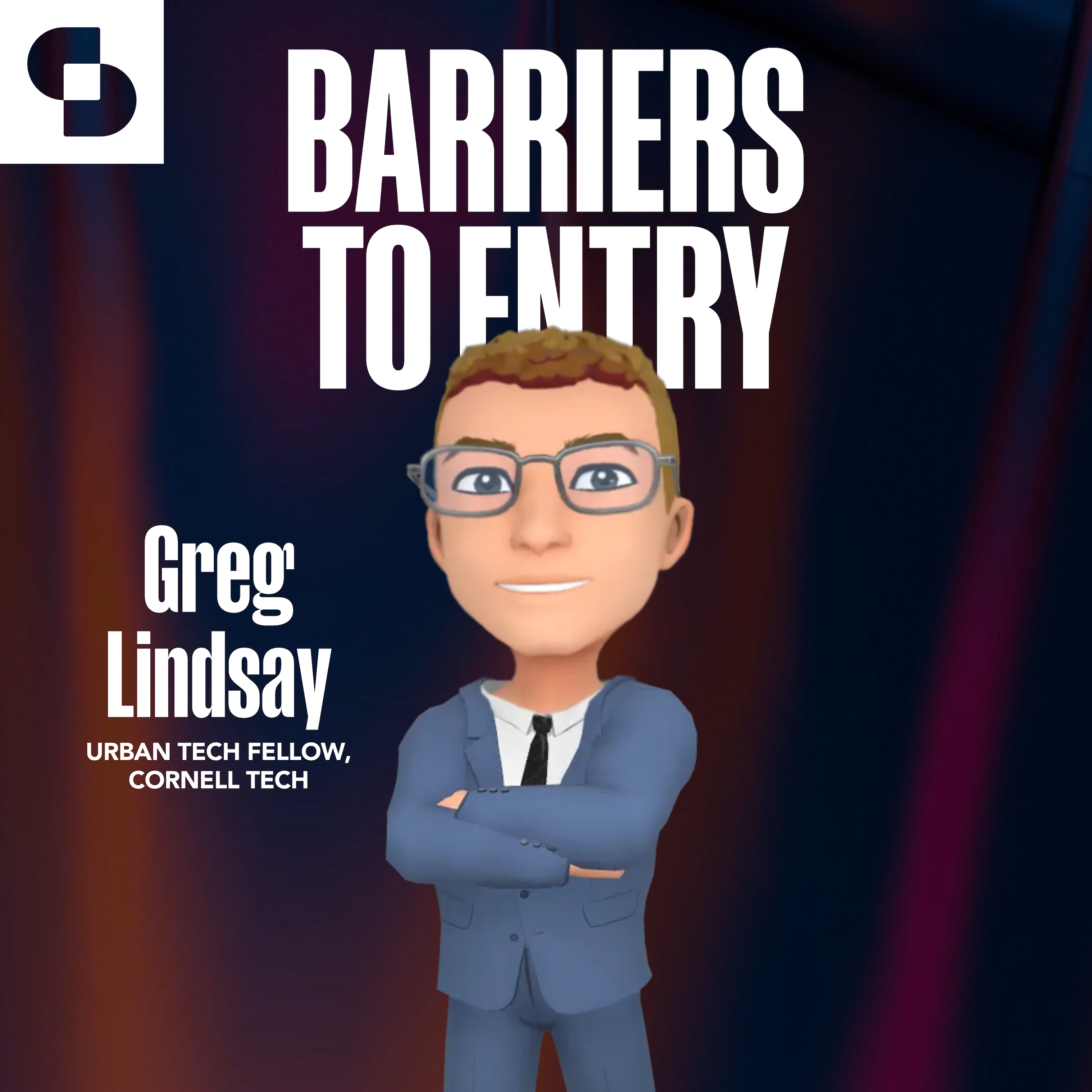Today on the pod the gang welcomes a leader in innovation at one of our industry’s most renowned firms, Perkins & Will. While Yehia Madkour currently resides in Vancouver, allowing Tess and Andrew to claim him as a ‘Canadian’, he hails from one of the world’s most bustling and populous cities, Cairo, Egypt, where his appreciation for architecture, technology, and transportation systems was first forged. Today he leads a global innovation network that’s experimenting with bleeding edge tech to deliver innovation for both his clients and the firm itself and takes the time to share with us that process, how he got started and much more.
Connect with Yehia Madkour on LinkedIn!
Moments to check out:
- Exploring innovation in the context of architecture (Starts at 7:09)
- Driving and embedding innovation within the firm (Starts at 14:33)
- Transportation, innovation and AI collide (Starts at 24:36)
- The role of VR, AR and the ‘digital layer’ of the physical world (Starts at 30:27)
Connect with our hosts on LinkedIn;
References and resources:
Discover more shows from SURROUND at surroundpodcasts.com. This episode of Barriers to Entry was produced and edited by SANDOW Design Group. Special thanks to the podcast production team: Hannah Viti, Wize Grazette, Kasey Campbell Thompson, Rob Schulte, and Samantha Sager.
Yehia Madkour: [00:00:00] We’re not in that space anymore where we can design in one way and keep doing that for the next 20 years. That’s not the world that we live in right now. So what it means is, you know, people or younger designers need to just open up their minds into different ways of doing things and being. Accepting of the fact that even if they’re not the early adopters, they’re gonna start to really change things or like test them out.
They would need to be ones that are really open to doing things in slightly different ways.
Andrew Lane: Welcome to Barriers to Entry, the podcast where every episode we get into it with the leaders, designers, early adopters, and influencers who are shaping what the metaverse, artificial intelligence, the blockchain, and more will mean for the architecture and design industry.
I’m Andrew Lane, and with me, as always, are my eternally supportive co-hosts, Bobby Bonett and Tessa Bain.
Bobby Bonett: Wow. That was one take. Nicely done, Andrew.
Andrew Lane: That was a one take wonder intro. We definitely didn’t [00:01:00] record that four times.
Bobby Bonett: Exciting day on the pod as this is a, it’s almost a crossover episode, sort of. Hmm.
A little bit… we tried. We’ve got a guest on from an interior design giants firm, Yehia Madkour, who is a Principal and Director of innovation at Perkins&Will, and you may know this but, Perkins&Will’s Inhabit podcast fellow member of the SURROUND podcast network. Plug, alert. Plug, alert. We’re getting them in early and often today.
And Tess, we’re gonna be talking about not only innovation today, but also transportation and where those two. Universes shall collide, if you will.
Tessa Bain: Transportation a personal favorite of mine. We definitely get into all of the highs and lows of transportation and where Yehia found a lot of his inspiration.
He is a fellow Canadian. Mm-hmm. Which I think we brought up maybe one too many times. Yeah, definitely early and often, and it was really interesting to hear from his perspective, his approach and just design intention and [00:02:00] using a lot of these new technologies that Andrew listed off the top.
Andrew Lane: Yeah, absolutely. I think it’s so exciting when you get in with some of these firms that have roles created for people like Yehia who embrace this tech and really explore how that intersects with the passions that brought them to the architecture and design industry in the first place. So I think we should just jump right in with Yehia and, and stop teasing our guests with all these little cliff hangers and, and get right in.
Yehia Madkour: Yeah. Let’s go.
Tessa Bain: We are joined today on the pod by Yehia Madkour, Principal and Director of innovation at Perkins&Will. Based out of Vancouver, and today is a really big day for the Canadians on barriers to entry. Yehia views himself as an agent of change, looking to advance the world through design and innovation.
His notable projects include the Ottawa Confederation Line in Ottawa, Canada and the Riyadh prototype stations in Riyadh, Saudi Arabia. If you’re a SURROUND podcast network, super fan, you’ve also heard Yehia’s voice, albeit briefly on Inhabit a podcast from Perkins&Will [00:03:00] that is a proud partner of the SURROUND podcast network, just like Barriers to Entry.
Yehia, we’re excited to have you today.
Yehia Madkour: I am very excited to be in this show.
Andrew Lane: Welcome to Pod.
Yehia Madkour: Thank you.
Bobby Bonett: Good plug in the intro there. Tess.
Andrew Lane: That was, I thought you’d be impressed by that. Bobby, that’s usually your territory.
Tessa Bain: I’m not gonna lie, I probably ran through it in the mirror five times before we started, just to make sure I lived up to you.
Yehia, we wanna start at the beginning today, and we wanna hear about where you grew up and why that played such a key role in shaping your passion. Absolutely. Architecture.
Yehia Madkour: I grew up in Cairo, Egypt. I born and raised there. Cairo is an intense city. 20 million people living in one. Dense metropolis and understanding the role that, you know, buildings open space play in people’s mind and the way that they live and the way they interact with the city and the way they interact with each other.
Also, growing through many layers of history got you to appreciate and understand what it means to actually see buildings [00:04:00] that have been there for thousands of years and see how people can, you know, interact with it. I think the whole idea of, that interface between people and the built environment really manifests itself in really dense cities.
And I think Cairo was like the optimum place to live in, to actually see that type of interaction day to day and shape your experience through interacting with cities and streets and people around that.
Tessa Bain: And we hear you have a professional passion for the role of transportation specifically in cities.
And where did that manifest from?
Yehia Madkour: That’s, that’s interesting. Growing up at Cairo, the transportation system isn’t great at all. I mean, there’s a link infrastructure. And I got to see how that can create like a different pattern of movement and a different pattern of behavior where people rely more on cars because you can’t get to rely on actual systems that are reliable and dignified.
Mm-hmm. And I think that was, Perhaps some of my own readings are research and specifically codes like, you know, cities that are dignified would [00:05:00] allow folks that are eight years to 80 years to like navigate or without the need to use personal cars and it’s, it’s not the rich that would use personal cars.
It’s actually everyone essentially creating or understanding that there is a space for movement within the city that’s, enabled by the infrastructure got me to understand that public transportation is the infrastructure and the bone that allows people to move through the cities and allows goods through to move the cities.
And it’s this space where you create civic pride by being able to see that infrastructure actually really working and people can rely on. And then my move to North America and starting to see systems and Europe as well. Starting to see systems that are quite ingrained in how society moves and it’s whether the London tube or experiencing that in in France and Paris really got me to understand the effect of transportation.
So I’m interested in the sort of backbone of public transportation as in railways and systems that are quite embedded, but also in the sort of so software touches [00:06:00] of micro mobility and how. These start to perhaps help and augment that backbone where you start to connect folks to their destinations in that last mile that they need to go to, whether they’re getting a scooter or they’re moving with other sort of mobility that allows that network to expand.
So it’s a combination of both that got me to understand how people should be moving within cities in a way that relies less on personal vehicles and more on infrastructure that’s just available for everyone.
Bobby Bonett: What’s your favorite, uh, mass transit system? We,
Andrew Lane: Bobby always plays this game. By the way,
Bobby Bonett: This question was written by Arlene, who was my seven year old daughter.
Yehia Madkour: That’s, that’s amazing. I, I would tell you like, I, I was quite impressed by London too. I mean, it’s just grown over time and I think that’s the beauty of it as well. It’s, it’s really embedded and how people move through the city. I would tell you I’m quite impressed by the city that I live in as well, Vancouver.
Although the infrastructure isn’t as widespread or the network isn’t as big, it’s quite innovative. We have one corridor that’s the most used in [00:07:00] North America in terms of ridership, and it’s people really believe in the system and One aspect that really interests me about it is that driverless trains, again, I have that mentor technology and I really get excited by technology that enables things to happen and move better.
And one of those was getting a full system that rides on trains that are just automated and seeing the skepticism of people, but then getting to use them and getting to know that’s actually safer. All of this sort of like understanding of behavior and perception is really interesting to me.
Andrew Lane: Yeah, it’s no surprise you didn’t mention the city.
Tess and I are in Toronto. The most recent article I read about our transit system is that it’s about to enter what’s called a transit death spiral. That’s where we’re at. But agreed on those places in Vancouver is an amazing place to get around. So you got into it a little bit with this idea of driverless infrastructure, but what is it that first brought you down the path of exploring innovation in the context of your study of architecture and design?
Yehia Madkour: That’s an amazing question. I would tell you it all started, [00:08:00] let’s say 20 years ago, my undergrads. I was super frustrated by the notion of dissolving or like disconnecting technology from the active design, where at that time we were asked to just do everything by sketching or getting to design and present in a very manual way.
However, technology had already advanced at that time or like you’re building 3D environments that you’re actually rendering and all of that, and it feels like there was a disconnect between the pedagogy of architecture and how it’s taught versus perhaps where the technology is at that time. I got to understand later that perhaps that was a good thing because I got to learn how to sketch and I got to learn how to use my hands, and that has been a great thing to learn.
However, it started from there, and then when I went on to do my Master’s, I had that I would say luxury of choosing my research space and I did my master’s in research. It was a full program around the topic. A t that time I was looking at where things are moving with regards to technology. I’ve always been interest in technology, but [00:09:00] specifically as it relates to architecture.
It was computational design that got me into it. At that time, I was working with, uh, a professor of mine, Dina [Inaudible], who had just graduated from Cy ark. And she got us all into all sorts of things that relate to parametric design. And I’m talking 2005. This is probably, you know, 18, 20 years ago. Where the discourse was around creating complex geometry and blobs and how to do castellations and more on the fun side of all the easy stuff.
All easy stuff.
Bobby Bonett: All easy stuff. Sort of like all easy stuff to understand. Mm-hmm. Um,
Yehia Madkour: the fun and cool stuff of computation. And my thesis then was can we actually make computation a way to explore the design process itself, understanding where functions and performance are and how do you apply that on scales.
And it got me to a place where maybe there’s something more, maybe there’s more into technology there that can actually be quite useful to your everyday design process. So this is where I got really connected into it, and [00:10:00] I spent a few years really just researching that space. Things led to one another where this computation got me to into a place of understanding AR and vr, and there’s a few years spent into that.
And then the whole prototyping and digital fabrication, understanding CNC’s and 3D printing, and later on robotics and going into all sorts of things that relate to like how technologies enabling a design process itself. So it’s really stemmed from that as just pure interest in technology. But then, All of the interface that happens with architecture and where the opportunities lie, and I, the whole trajectory towards innovation has stemmed from that.
It’s the bend towards technology.
Andrew Lane: Would you say that your explorations started from a place of utility or a place of purpose, or were they more driven out of curiosity? Like were you actually trying to solve a problem as you explored some of the technologies that you mentioned? Or did you just sort of think, hey, these are kind of interesting and you started dipping your toes in the pool?
Yehia Madkour: I was curious. Definitely curious. A hundred percent. It’s like full on [00:11:00] jump. Okay. I could not say that it came from utility that I had a challenge that I needed to solve. It was the other way around where I was like super curious. Started to dive in and from there start to emerge, you know, opportunities and connections.
And then I think as I did that, as well as started to be a designer growing into some roles leading design projects, the utility started to connect. Where you’re starting to understand, okay, we’re doing this and we’re solving these things, and I can speak about one of my earliest projects in that sense where you start to understand where computation can come in and where all these different uses and techniques can actually help you in your desire process that perhaps is led in a more expected way and technology can actually help spin it around and make better utility.
So yeah, all curiosity
Bobby Bonett: At some point that curiosity morphs into an opportunity to take on a leading role in driving innovation at Perkins&Will, how, how does that job right itself? I [00:12:00] mean, was it a matter of you, you know, speaking that into existence, was there a posting on the Perkins&Will internal job board, and you said, here’s my resume. I’d like to be the chief innovator. Kind of walk us through how that, you know, kind of opportunity came about for you.
Yehia Madkour: Oh, I, I lost speaking about this. No, there is no job posting. There is no title. I made this my own in a way. Again, like these ideas of like leading my own projects in a slightly different way, understanding where technology jumps in leading computation in a firm that at the time I joined 2010, there wasn’t really that wider understanding of what computation design, and I felt that I was doing this for my research in the last four or five years.
However, when I got to practice, that space was not yet established and a lot of it related to my own initiative of starting a smaller group of computational designers. You know, we were two, three people. Fast forward two, three years, it became like 60 or 70 that are really trying to bring difference in how we think about design process.
That led to [00:13:00] quite a bit of presentations and pursuits with projects, landing some big accounts on the promise that this computational aspect is gonna change how we think about design process, and understanding what kind of value it would bring. So that started from there and then it was a time where I got to be known more and more for these, I would say, special type of engagements and projects, and then being asked to connect more with various projects around the firm because of that angle.
And then from there it was the space in Vancouver, we had a research team that was mainly looking at sustainability. And it was a time to start thinking a bit broader about what research is in a design practice. And it’s not just purely about sustainability. That’s, you know, where the practice started.
But it’s also about all sorts of things that relate to technology and design process and how new ideas can come in and how do you actually leverage that in your process. And from there, there was the creation of a new title and a new space where, you’re trying to lead the cutting edge. [00:14:00] You’re trying to understand bigger things that are happening in the world.
Understand these trends, understand where technology lies within those, really understand the design process that exists now, and then start to see where the gaps are and connect the dots. And that’s sort of like where it all started for me in that particular role about five years ago in Vancouver. And then doing some of that work in Vancouver started to grow around the firm and get known for it, and I got invited to a research board.
I got invited to the technology board. I helped participate in our full digital practice strategy teams. And with that it’s sort to grow around more of a firm wide role and, and a space where you really try to drive a different way of thinking in the firm.
Bobby Bonett: Did it take a minute for the emails to stop coming in with people asking you to help them reset their password,
Yehia Madkour: The tech difficulty that happens with connecting the TV and the teams and all that?And somehow everyone looks at me and I was like, ah, no, that’s not what I —.
Bobby Bonett: I am curious though, you know where Andrew Tess and I are, are always dealing with. Even in the last six or seven months since we launched this podcast, [00:15:00] eight months, how fast the technologies we’re discussing are, are evolving. And you’ve been in this role now for five, going on six years.
What do you do to keep up and not only keep up, and I’m sure you’re looked at now as the instant expert. As you know, tools like artificial intelligence start to come into the mainstream conversation. So what do you do in order to stay afloat at all times and make sure that you can speak to a client internally as the resident subject matter expert when, when tides are turning so fast?
Yehia Madkour: I would say that I cannot do this by myself. Um, I also rely on quite a team of folks that are equally curious and sometimes even more. A lot of it is creating the space to be aware and test things as they go. There’s a lot of things that we try. There’s a lot of things that we test and creating that space of focus where there’s this new thing that’s there, let’s find it out and let’s assess it and let’s try to use it on projects, or let’s just purely try to do some speculative studies around it.
Being aware of where technology is developing and [00:16:00] when the trends are, and there are various ways of doing so, whether it’s some platforms that provide that or it’s pure curiosity over the internet on which is being up and understanding where things are. But I think a lot of it is like just not drowning in the day-to-day things that you’re doing and really trying to carve that space, whether it’s a couple hours a day, to just be aware of what’s around and testing it out and you know, being able to form an opinion around what it is.
And. I’m not regarding myself an expert in any event, and I think we, we talked about this a bit, but I think the understanding of where our process is and what kind of technologies are emerging and trying to connect these dots between what could be possible and what’s current is where I play. And a lot of it is devoting the time to do so.
Bobby Bonett: So we hosted a LinkedIn chat about six months ago, and the feeling amongst designers, I would say it wasn’t exactly optimistic in relation to adopting new technologies, especially as it had to do with workloads. [00:17:00] I mean, you just mentioned spending a couple of hours a day. Researching new technologies and familiarizing yourself with new technologies. And that’s daunting to think about. I think there’s only eight hours in a workday. Um, that’s what I’ve been told, right?
Andrew Lane: Yehia Madkour: That’s a lie.
Bobby Bonett: And a couple of hours, you know, we’ve just run out of 25% of that day. And so I’m curious, you know, what the general attitude is either at the Perkins&Will level. Or when you’re dealing with clients on how to introduce and integrate what we’ll call emerging technologies to a team that’s already busy and already dealing with new platforms, and already dealing with new standards that they need to design for. Cause I’m, I’m sure sometimes you might be the least popular guy in the room coming in with this new idea or this new concept that you’re looking for a team to adopt.
Yehia Madkour: Oh,a hundred percent. I and I, and when I mentioned the two hours, the, the two hours that I spent. Sure. And I’m in a very special role. Um, so I would tell you it could be a very, a very overwhelming space for designers where you’re constantly working through deadlines, doing things as, and, and it’s [00:18:00] already hard to learn things the way it is versus being the, in that space where you’re continuously thinking and critiquing and rethinking your process.
So I would say rely on perhaps the innovation sort of digital practice team to look at all of these opportunities to test things out, and when we feel that they are in a place where they can actually bring utility to your question, Andrew, this is where it gets to become more adopted at a wider space and perhaps try to change a certain process.
And it takes time and it takes patience. It’s not gonna change every single project in a matter of a few weeks or a day. It will be something that gets to be explored within a, a matter of a few months or. With that, you’re also going through the risks of understanding that whatever you try today, six month later could be obsolete.
So it, it is a continuously changing field and it, it’s not easy at all. But I would say for designers in the firm, we’re lucky because there’s a lot [00:19:00] of curious designers and there’s this whole curve that you would understand where early adopters are, and we have quite a bit of those and people who would need to see the early adopters to start believing in the systems.
And there’s always the 10% that would say, you know, It’s not for me, it’s not for this project. I’m not gonna do it now. And they tend to only get on that track after it’s been done a few times and it’s already shown the value. Um, so I think we, we work with this within the organization. It’s an organization with like, I don’t know, 3000 people now.
So it’s sort of like a mini world in its own and you know, you get all sort of like space around adoption. But yeah, designers can be overwhelmed with the different amount of tools that they have to learn and we’re trying to be a bit agnostic around it. Whatever that suits the job in a way, I think is the right approach, um, rather than being very fixed on a certain way to do things.
Andrew Lane: It sounds like you’re culturally fairly well equipped from an innovation standpoint at the firm. I, I’ve always found one of the trickier things is [00:20:00] when you do hit something that might be a, a process improvement or a real opportunity that you think, You want to see more broad adoption across and really try and promote into the teams.
Have you developed a rhythm in how to do that or, or even how to identify those kinds of things that you think might really have some teeth with the teams and, and how to get people pulling in the same direction and, and starting to really use and, and test out these, these new concepts.
Yehia Madkour: Yeah, there, there are multiple ways at it and, and you can think about it coming from two ways.
One, there is the space where designers sort of working on projects day to day. They’re entrenched and they know where the client pressures are. They know what the project needs are and this is where they could. Show possibilities or frustrations. Uh, everyone is encouraged to say if there’s a frustration with the system or if there is a place where they feel somewhere automation is needed.
So it could come from requester coming from teams. Can we look at this? You know, I’ve got [00:21:00] an urban design project that I’m trying to do this, this and that, and it feels like the tools that I’m working with [inaudible] 3D allowance.
Andrew Lane: So you, you’ve developed a bit of a feedback loop is kind of what I’m hearing. Is that fair to say?
Yehia Madkour: Oh, a hundred percent. A hundred percent. There is, yeah. Yeah, so there’s this sort of like bottom up approach where like we’re really trying to harness things that happen in projects and understand where the pressures might be. And then there’s the digital practice team that’s really very well embedded in, in projects that would try to bring those up.
And then it becomes more of a solution that, or a script that gets written that then can be shared across. Um, there’s also the other way around where we have more of a SWAT team on the digital innovation space, the our io. Group, and B, they essentially are looking to create new opportunities. They would create a space of let’s test one idea out and we can spend a couple months developing a system for it.
If it works, it’s great. If it doesn’t work, we’re gonna throw it out and we’re gonna work in something else. And it, it’s this cycle of really trying to work in really quick [00:22:00] bullets, um, that allow us to innovate in certain spaces. Some of them will rise, and when they rise, they then, get to be developed within the district practice team that has more grounds within, um, the projects.
And then, you know, you get every designer to be working on it in a matter of like six months or a year. Uh, but it gets prototype first in IO and then wider adoption within digital practice and, and the designers pull. So there is a system there, there’s definitely a system that works within the full organization because we’re, we’re, we’re 26 studios now, and there are things that.
Over arch, the 26 studios in terms of how we think about technology and and design process, and that’s the mechanism for our digital practices.
Tessa Bain: Are you finding that your clients are starting to come to you more recently in like requesting this level of innovation or requesting solutions to these problems?
Or do you find that Parkinson will sort of leads with the innovation and then brings it to the client? Like what’s that experience like?
Yehia Madkour: In most of the times it’s Perkins&Will leading the innovation and bringing it to the client base. [00:23:00] However, in some cases, some clients are asking for specific or they might reach to us as a team specifically saying, We’re, we’re trying to envision what a digital campus might be.
Clients would be saying, we think that you might have an understanding of this based on what we’ve read about your solid leadership or what you’re, what we’ve heard you’re doing in other places. Can you help us with that? So it happens both ways. I would say in most of the cases we’re the ones that are sort of leading and educating and trying to open up opportunities with technology and with innovation and bringing our clients of work.
Bobby Bonett: So you, you don’t feel as though you’re necessarily dealing with situations where you’re brought into the room by a client who says, okay, we’ve got the project scoped out, but we forgot to innovate. So, Yehia, where’s the innovation line in this project where, you know, you, there isn’t like the need to, to fill out that, that mad lib at the end of the project.
Yehia Madkour: Yeah. And if it’s so then we just accepted this project. Just did not have that chance. [00:24:00] I think it’s very hard to try to look back and try to fit something and wedge it in. It’s not a checklist. Um, there are some projects that are gonna, you know, proceed in a very expected way, and there might not be those opportunities for innovations, however we try.
But I, I think the best shot is when we look at the projects at the outset, you start understanding where the goals are. What is the client coming up with as a brief, what do we as a design firm believe in, or our values? How do you wanna serve that connection between the project and the users and where opportunities might lie.
And within those like higher design goals, then you start to say, what are the questions? What are the research questions that we might ask? And how do you actually connect newer ways of thinking to actually help us elevate that purpose and get to that goal? So it is a really early thinking that allows us to get that space where innovation might happen on a project.
And without that early space. Sometimes there is an application of technology that could be regarded as an innovation or an application of a certain thing that could [00:25:00] happen too without that bigger goal. But then the opportunities sort of diminish as you move in the process. And if it gets to the end where like, where’s the innovation?
Can we wedge it in? Uh, it’s too late. Hmm.
Tessa Bain: Yeah. And you mentioned earlier you’d worked in VR and AR and curious if you can talk about that experience a little more that, that type of project.
Yehia Madkour: That’s funny. I sit here in this room and I remember, uh, a PhD student that was supervising at SFU that’s in the early days, I think like eight or nine years ago, uh, where the first Oculus came up.
And we were looking at ways to navigate 3D models in virtual space. And we weren’t quite convinced with using a game controller to do so because it doesn’t free up your your hand. So we developed a little system that you get a chair, it’s an ergonomic chair that has movement. It’s front and back and left and right, and it’s sort of a stool.
And we install the, an infrared camera within that. So whenever you move forward on that chair, you’re actually driving forward and [00:26:00] leaning right and left, and that became your controller. And that was a cool thing that, I don’t know, six months later, we never used. Um, but it was a, it was a cool exploration, but like the, the actual, I, I think space that I played in, that was the visioning of what it means for design process, what it means to have real-time renderings versus to these still images of 3D components, right?
How to actually think about immersive space, how to think about scale in a different way, because again, like what you see in images is slightly different from what you can immerse yourself in. So it was all about motivation and testing technology. Look, working with designers and, and seeing where those opportunities lie in immersive tech and you know, assessing what type of tools are there, whether we’re looking at, on Unreal Engine engine four or Unity, or are we just working with Scape and what does it meet for design process?
Do we need to pull 3D models out of the system to sort of like do an immersive experience or do we actually work within, uh, a plugin that can sit in the top of Rabbit or binder that can allow us to do [00:27:00] so? So a lot of like different things around what fits in design process and when. That was my involvement in that space and I stayed quite close to that space for a few years until it sort of became, I would say, more mainstream and it’s just being used and I’m just happy, you know, popping up in our basement and seeing like folks putting in the VR goggles and I don’t even know what’s the latest VR goggle that we have right now sort of moved on from that space since it’s like already being used.
Andrew Lane: So you’re talking a lot about using VR, 3D spatial tech as kind of part of the overall process, um, to get to your outputs. Are you looking at spatial technology in other areas? Like to your point, you don’t know what.You know, whether you have Oculus or whatever it is right now, but has that exploration moved into to new areas? Are you looking for new ways to leverage that technology, whether it be for the projects themselves, or to continue to improve the way you get to deliver your outputs?
Yehia Madkour: I believe the future is in AR, XR, you know, augmenting what’s already there [00:28:00] in physical space and I think this is where. Our shift in focus in digital innovation side is, is happening right now. It’s the ideas of augmenting physical space with digital layers and understanding as designers in that future where you have AR goggles and lenses and technology more widespread in consumers hands. How do you start thinking about your physical space with digital as a material or as a layer that then you can start to connect both worlds together and how do you design for a world that has both so that you’re not.
In a space where like now my technology is in my laptop and my phone, it’s actually being immersed within it. So that’s where the, the whole digital content creation and how it overlaps with the physical content, with that digital layer in mind. This is where our headspace is. So it’s moved in from just immersive space or like the pure Toward an augmentation?
Mm-hmm.
Tessa Bain: Yeah. We actually had a guest on that [00:29:00] spoke about. Their two year old son and was telling us how it won’t be the digital world and the physical world. It will just be the world. And it sounds like that’s something you might agree with. Yeah,
Andrew Lane: ye. Do you feel like you’re almost placing bets on some of these technologies when you’re in a role like yours?
Like you’re looking at certain things and you’re going, no, this is a place where we wanna put more emphasis. This is something that we just don’t have the bandwidth to pursue any further. Does it feel like you’re in Vegas a little bit? Can you talk about how you kind of evaluate those opportunities?
Yehia Madkour: That’s a great question. Sometimes yes, sometimes you need to follow intuition. There’s a lot of different ways to think about it, and intuition is one layer of just getting your gut sense of what are the things that are really valuable for us to move towards or what we might be ready for. However, looking at the world and where things move sort of gives you indications of what’s out there that hasn’t yet touched the architecture, but you know, has changed how people live.
So when you start to see [00:30:00] people running are relying on their Apple watches and Fitbits to measure all sorts of things around the running distance and heart rates and all of that, you know that the ideas of understanding digital metrics that evolve around how we do things in the physical world is becoming more of a mindset for everyone.
Versus something that you know only a few are interested in. And with that, you start thinking about the physical environment as we design it, and where that digital layer might be added to the physical. And you start to sort of like drawing connections between these things and speculating perhaps a bit about the future vision that you might wanna see, and then motivate people around it.
And if you’re able to motivate people, you’re able to motivate clients, you’re essentially creating the use case and that utility. For something that you envision. So a lot of it is dreaming as well, but I would say yes, there’s sometimes you’re placing bets, but they’re all rooted in where the world is changing and how it’s [00:31:00] changing and where it’s moving towards.
Bobby Bonett: Earlier on we were chatting about our favorite trains, and since then we’ve had a, a nice discussion about your experience on the innovation side, Yehia and, and I’m curious what you’re doing in innovation at Perkins&Will has dovetailed with your experience in working on transportation projects. And maybe if you can share.
Either some projects you’ve worked on or even some thinking you’ve done between the due passions you have, and if you humorous and do some future casting as it relates to where, you know, some of the emerging technologies we’ve talked about today might dovetail with, uh, with project design on the transportation side.
Yehia Madkour: What’s a question! So transportation, there is quite a bit of space for understanding what a future of stay of the stations would be, and I think that is at the core of. The more innovative thinking around what public transportation is and what the possibilities are. In one way, the transportation systems are quite closed.
I think the future of those would be quite open in terms of [00:32:00] physical environment. If you start to rely more on technologies in terms of understanding how people access transit stations. Then you’re able to free up the barriers around it. Every transit station has those turnstiles or ticketing systems that you know you need to pass through and close gates, and it feels like you’re in the airport in a conveyor belt and you’re like one luggage and just going from one place to the other.
It lacks that human experience. And I think with technology being able to free up those barriers, you’re able to track and understand payment systems and all that without the barriers. Then that allows the transit station to become more integrated in everyday sort of civic cultural spaces, which means that you just need a portal towards that train rather than a full station and a concourse and all of it.
And that would allow different experiences to happen within the transit stations and the transit station sort of to open up to the city itself and becomes one space that. Can allow more experiences, allow more functions. So if you’re thinking about a transit station being [00:33:00] one program, it would actually start to become more of an experience.
It could be your library and it could be your gym, and it could be your community space, and it could be a place where artists are and. In a way, and it could be a public plaza like you’re, you’re essentially just opening up that system and I think that would make a huge difference in how transportation is perceived, but also that connection with the city.
I think one other way around it as well is understanding with technology what’s possible to add. So if you’re there and you have to wait for your train for 10 minutes, what are the things that you can be doing within that space? And you know, there are examples from around the world where some sort of online shopping that allows you to pick up parcels as you’re going through the train.
And with that system it just, Helps you navigate the city in a different way.
Andrew Lane: I also think you might have just turned Tessa onto trains a little bit more with that last example.
Tessa Bain: I’ve heard that you can get on a train and then actually shop on the train and then have those packages delivered when you get to your destination.
Yehia Madkour: I think that exists. [00:34:00] You, South Korea. Yes. And, and it’s these systems of integration, right? Like technology enables that type of more intelligent integration to happen. And with that, you’re not just wasting time on space, just waiting. You can actually be in a place where you can have packages delivered.
You can pick up something. And with that integration of functions, you’re enabling a fusion of time and use to be together. One of the things that I think are quite promising as well is the understanding of. The whole movement of people after they’ve arrived at their destination. I mean, they arrive at a station, however, there’s probably another few miles that they want to travel towards their final destination.
How does that happen and what’s the role of autonomous vehicles in that space? You know, how do you create that connection where it’s actually one journey and you don’t think about one step at a time? You just step up. Think about where you are now and where you want to be. And all of these systems are integrated, so your public transportation system speaks to your Uber or speaks to your [00:35:00] autonomous vehicle, or it speaks to the right chair or speaks to the scooter system, and you don’t have to go through from one app to the other to the other.
It’s more about one personal journey that can be in labeled through it. And it can be optimized for you depending on what sort of like optimizations that you want. Are you concerned more about price? Are you concerned more about time? Are you okay to share with others? Do you wanna have a personal thing?
Are you active? Do you want to get a ride or like on a bike? All sorts of things that can be automated and personalized for people specifically. Technology can enable this to be one experience and it’s seamless. So that’s another way of understanding where. Innovation might happen within the transportation systems or how people experience it.
Andrew Lane: You talked a lot about a lot of systems talking to each other, a lot of APIs, and I think, you know, especially recently, a lot of artificial intelligences that are coming into these systems to help them kind of make sense in, in a really seamless and frictionless way. Can you speak about how AI is impacting other areas of your study or how it’s brought more to the forefront in [00:36:00] terms of the way that you’re applying innovation with your clients and with your work?
Yehia Madkour: In one way, we’re looking at. How do you develop systems to either accelerate things that are already happening or predict them? So one of the things that we do in our design process quite a lot is performance analysis. Every single building has its own energy performance, it, and you know, views on all of that.
These usually take a lot of power to analyze, and especially when you’re looking at genomes that already have a number of options that you need to go through. With AI and machine learning, there is a process that we’re looking at right now where you’re essentially predicting that performance, the system, certain inputs of building designs and certain outputs of performance.
Then you’re actually able to see that new design and predict what it perform without having to simulate.
Tessa Bain: So we know it’s hard to look into the future, but as someone leading innovation at a Giants firm, it’s sort of your job. So we’re just wondering if you’re able to give us your hot takes [00:37:00] as we look forward to the next five years.
Yehia Madkour: I think my hot take, I think is gonna be the unexpected one. It’s AI, but also I would say AR, you know, the whole move towards shared AI, what the opportunities are, how do you get intelligent systems to enhance what we’re doing as designers, but also how to keep the space for designers to have autonomy over the process and bring that human space.
I think that very delicate space is gonna be needed, and it’s the navigation of both that we need to look at as designers and architects. I’m personally quite excited on the whole digital to physical connection, really understanding the sensor space, understanding how you might understand the flow of people within space after it’s been designed, how they’re interacting with their environment, how they learn from that.
How do you create systems that might change their behavior towards a more positive one within the environment? How do you overlay digital content on things that [00:38:00] are already created? Um, these are all areas that I think are gonna flourish in future. If you think about the whole interaction with gaming and the understanding of how you might reskin.
Your avatar, your your, your personal existence, initial environment. I think in future you’re gonna be looking at buildings with zap as well. Digital being a layer. What are you re-skinning with and what kind of experiences are you getting as digital content on top of your physical and how do you design physical space with that in mind as well, that it’ll be changing and it will be up to the users to sort of create their own specific experience. I think these are all things that are high in mind when, when we’re starting to think about what future of design might bring in the next few years.
Bobby Bonett: It’s overwhelming. So I’m wondering, when you look at an emerging designer, let’s say, you know, a younger designer in the profession, what advice would you share with them? I know we, we kind of joked about this earlier on, but who might feel as though they’re strapped for time right now? They don’t have the bandwidth to [00:39:00] be on that early adopter section of that curve of adoption.
How do they stay ahead of the game? Understanding that a number of the technologies you, you just mentioned, like AI are going to ultimately proliferate. Whether they like it or not, and they want to ensure that they are prepared for the ways in which their jobs and and responsibilities are going to evolve in between now and, and five years down the road.
Yehia Madkour: I would say three things. Stay curious, accept and embrace change, and take initiative. I, I think these are the things that personally has allowed me to be in that space and I feel has served me quite a bit to be nimble. You did mention how technology paces shifting so fast, and what that means for us is that we need to be nimble and accepting that change and really embracing it so that you’re continuously being open to change your process and you know that your process are gonna change on you.
We’re not in that space anymore where you can design in one way and keep doing that for the next 20 years. That’s not the world that we live in right now. So what it means is, you know, people [00:40:00] or younger designers need to just open up their minds into different ways of doing things and being accepting of the fact that even if they’re not the early adopters, they’re gonna start to really change things or like test them out.
The would need to be ones that are really open to doing things in slightly different ways, and that would happen every few months or every year. So I think, you know, being in that space would be great to have as a mindset accepting change and moving ahead with it and embracing it. Cuz as he said, whether we like it or not, these things are gonna perforate and AI is gonna be part of the process.
And it’s a matter of folks who embrace it that I think are gonna start to move forward, ahead than others who don’t. So it’s, it’s a way for us to find the right value and being able to embrace that and finding, you know, where the connections of value are. I mean, there are great things that can be done and there are others that might not be as great.
So can you focus on the positive and, and try to move it ahead?
Andrew Lane: I, I’d [00:41:00] like to go back further to you as a kid in Cairo. What would you tell yourself about the future from what you know now that you think would be the right, impactful message? Uh, similarly to what you just shared with Bobby’s aspiring designer.
Yehia Madkour: Wow. I would say embrace tech. That’s my view, and I feel it. It’s a place that’s quite important to understand. But I would say embrace tech. Embrace tech, not for the sake of embracing it, it’s for humanity. So try to really find the value that you stand behind, the principles, things that you want to change on the world.
Outside of tech, what are the bigger questions? That bring value to humanity, bring value to yourself whether you have a, a space where you want to change things around climate change or social justice or other bigger questions in the world. And then start to see how tech can help, because tech can help, but it’s an understanding of tech needs to operate in a space where it’s serving a higher value and it’s not for its own.
So [00:42:00] that is I, I think for my earlier years, I think I was more focused on the curiosity and the tech itself rather than the higher purpose. And it’s only the last 10 years that I started to connect the two. I think if you start by the bigger purpose and really try to embrace tech within that, you might actually.
Achieve that purpose a bit faster rather than, you know, just being curious and playing in a space where you can spin wheels quite a lot.
Bobby Bonett: Very cool. Love that. On behalf of Yehia, I’d like to suggest everybody subscribe to the Inhabit podcast from Perkins&Will. It happens to be a member of the SURROUND Podcast Network, of which this fine podcast, barriers to Entry is also a member.
Tessa Bain: Well plugged. Well plugged.
Bobby Bonett: Thank you. Thank you very much. Well, that’s why they call me the Plug Guy.
Tessa Bain: So we always love to wrap our episode and take the moment to ask you. What piece of advice you would give or resources you would share with our listeners? I know you gave some excellent advice earlier. Is there a particular resource that you rely on or any type of resource [00:43:00] you’d share with our audience?
Yehia Madkour: I think one of the things that I felt has helped me a lot in terms of connecting to folks that could enable innovation is understanding the effect of social networks in one way of I’m one who, don’t like small talk. I’ve been quite awkward in networking in the physical world in a way, but I think I’m flourishing in the digital space.
So when you mentioned LinkedIn earlier, I was thinking, yes, absolutely. I’ve connected to so many great people that have so many great things to offer just based on that. So I take it as a platform to share passion, bring a human aspect to the things that I work on. And at the same time, that creates a space where people connect to me for who I am personally, but also what I can bring professionally.
And it’s a place where they can nourish and connect and find opportunities. And people reach out to you because they have this thing that’s, you know, they would like you on or. There’s this speaking event that you might be invited to or there’s this new [00:44:00] technology that you might not be aware of that someone is trying to bring towards you.
So, you know, embracing that sort of connection is, is actually a great thing. And I think in this particular time in the world, it’s important to create that digital space and actually connect around it. LinkedIn has brought great things to me, and I think it’s definitely a space where professionally people can grow up.
Andrew Lane: Amazing Yehia, thanks so much for all the insight and great conversation today for bearing with our insistence on unplugging things, uh, and our need to talk about trains. We really appreciated the conversation and we’re really excited to see what’s gonna come next from you and from the team at Perkins&Will.
Thanks Yehia.
Tessa Bain: What a lovely conversation.
Andrew Lane: Yeah, that was definitely inspiring. I, I think it’s so great when. You have the opportunity to speak with people in roles like Yehia is in, where he’s focused on innovation and looking at how they build out process to really amplify what they’re doing into the organization and create tools and create mechanisms that [00:45:00] they can really find those things that work and cascade them quickly.
Like that’s such a great way to set up work and to think about work. In a way that allows you to take advantage of everything that innovation and technology has to offer. I think that was just so impressive to hear the process and the way they think about it at Perkins&Will.
Tessa Bain: And they move quickly too because a lot of the recent conversations that we have with people are in the different technologies that we’re all sort of learning about today, and AR and VR being one of them, although it’s not a new technology, I love the way that he’s thinking about.
These different types of practices and he brought up on the pod that this is something that they explored I think five years ago, if not more. And how quickly they sort of move through these different innovations. So he is the go-to guy when we wanna know what’s next and what’s in the future for mass market
Bobby Bonett: and sometimes even the go-to guy, if you can’t get your web conferencing software set up in the shared conference room, we learned the director of innovation. Yeah. Even he’s not immune from the [00:46:00] IT request.
Tessa Bain: I also wondered if his mom calls him and says like, help me turn on my computer.
Bobby Bonett: What’s the Netflix password?
Andrew Lane: Not to try and compare myself to Yehia, but I was a digital guy. Came into a new company in like 2010 and people were walking to my office asking me questions where I was like, guys, you’ve heard of Google?
Right? Like this is legit just an internet search. You just can’t. Like lean on the tech guy to know anything to do with the internet. It’s a burden that many have beared, and I would imagine that his mom is definitely speed dialing him with these kinds of things. Tess, if I’m reading the tea leaves here?
Mm-hmm.
Bobby Bonett: Well, this is episode 15 for us. Not that anyone’s counting. I mentioned that Penn ultimate episode pre-Neocon we’re right up against NeoCon, but I mentioned that because we are going to. Continue to broaden our horizons on barriers to entry, talk more and more about all of the emerging technologies that we’re encountering in the architecture and design industry.
So we’re excited about that and we have a big summer coming up, a lot of exciting guests, so stay tuned. For the summer [00:47:00] of BTE, I think that’s what we’re calling it, that’s on the shirt in the merch shop. Go to SURROUND podcasts.com to get your t-shirts, but it’s time for us to say goodbye and, and you know where we always like to say goodbye.
Where we like to start to say goodbye. It’s by thanking our production team, Sam Sager Wize Grazette, Hannah Viti. Rob Schulte, our chief researcher, Casey Campbell, our head of Networks, Rachel Senatore, Barriers to Entry as part of the SURROUND podcast network. Go to SURROUND podcasts.com, best podcasts with an S.
Check out all of the shows on the SURROUND Podcasts Network wherever you listen to SURROUND podcasts. Go ahead, smash the follow button. Give us five stars. Download the episodes, listen to the episodes. Enjoy us in the car. Enjoy us at the home, and join us next time as we continue to break down the Barriers to Entry.
Andrew Lane: Summer of BTE I can’t wait.[00:48:00]

